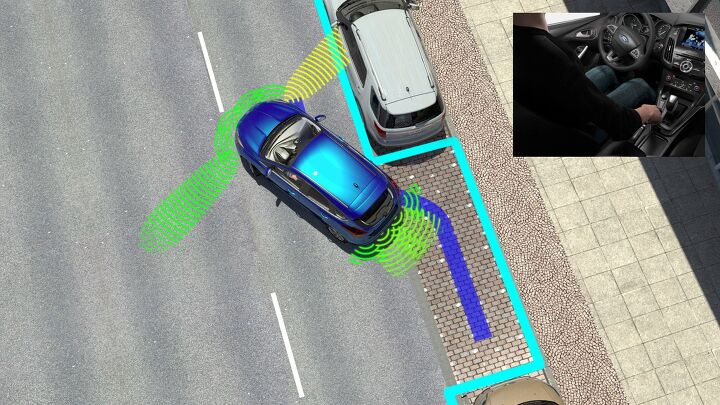
Ford is said to be in early stages of dumping parking assistance features on future models because drivers aren’t using the feature enough. Active Park Assist has been around for over a decade at this point. However, the computer-guided parallel parking feature is supposedly not going to be appearing in future models as a way to help the automaker cut production costs.
In a conference call heard by CarBuzz, Ford COO Kumar Galhotra said the parallel parking feature doesn’t see a lot of use and could likely be eliminated without creating an uproar while saving Blue Oval an estimated $10 million per year.
“So one example is an auto-park feature that lets the customer parallel park automatically. Very, very few people are using it, so we can remove that feature. It’s about $60 per vehicle,” he said.
From CarBuzz:
The parallel parking assistance feature is part of Ford’s Active Park Assist suite of driver-assistance tech. Introduced in 2009, it was among the first commercially available systems of its kind (Toyota being the first a few years prior), with the aim to alleviate the “stress” from the so-called “challenging” parking procedure.
Since then, several Ford vehicles received the feature, even the entry-level ones. Today, almost every brand-new vehicle with driver-assist features offers active parallel parking assistance.
However, the feature isn’t exactly something that customers use extensively, as Galhotra remarked. The company discovered this by using connected vehicle data from its customers.
The Active Park Assist, now in version 2.0, is still being offered to Ford vehicles today as part of Ford’s Co-Pilot360 — an SAE Level 2 autonomous driving technology. The F-150 Lightning and the newly launched facelifted Explorer, among other Ford vehicles, currently include the feature, but perhaps not for much longer.
As someone who parks vehicles on the regular, your author can comfortably say that most parking assistance features don’t tend to see a lot of use beyond that initial curiosity. The systems either work flawlessly or muck things up so badly that you vow to never use them again. The only real exception are rear-view cameras, which are nice to have considering how high beltlines have impacted the outward visibility of modern automobiles. While you should always check your surroundings manually to ensure safety, having a little camera that addresses the blind spot directly behind the vehicle is nice.
Meanwhile, features like Ford’s Active Park Assist tend to be a little slower than slotting the vehicle in the space yourself. It’s certainly impressive to see the car managing the task itself. But the action is always a little unsettling, requiring operators to hold their foot over the brake as the car does its thing, and is often slower than having a competent driver just park the vehicle without any automated help. Still, there will definitely be some people who will miss the feature once it’s gone.
[Image: Ford Motor Co.]
Become a TTAC insider. Get the latest news, features, TTAC takes, and everything else that gets to the truth about cars first by subscribing to our newsletter.

